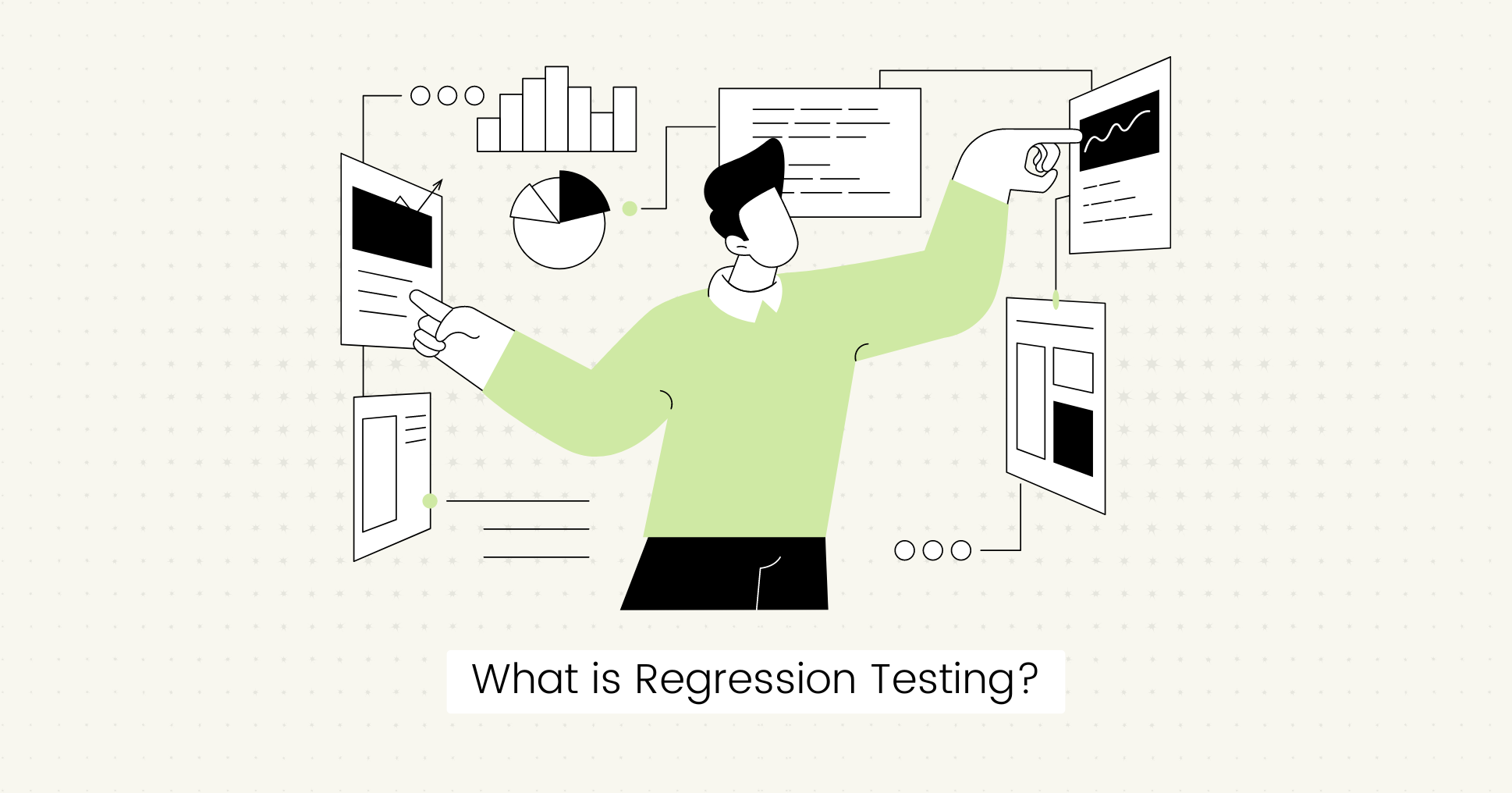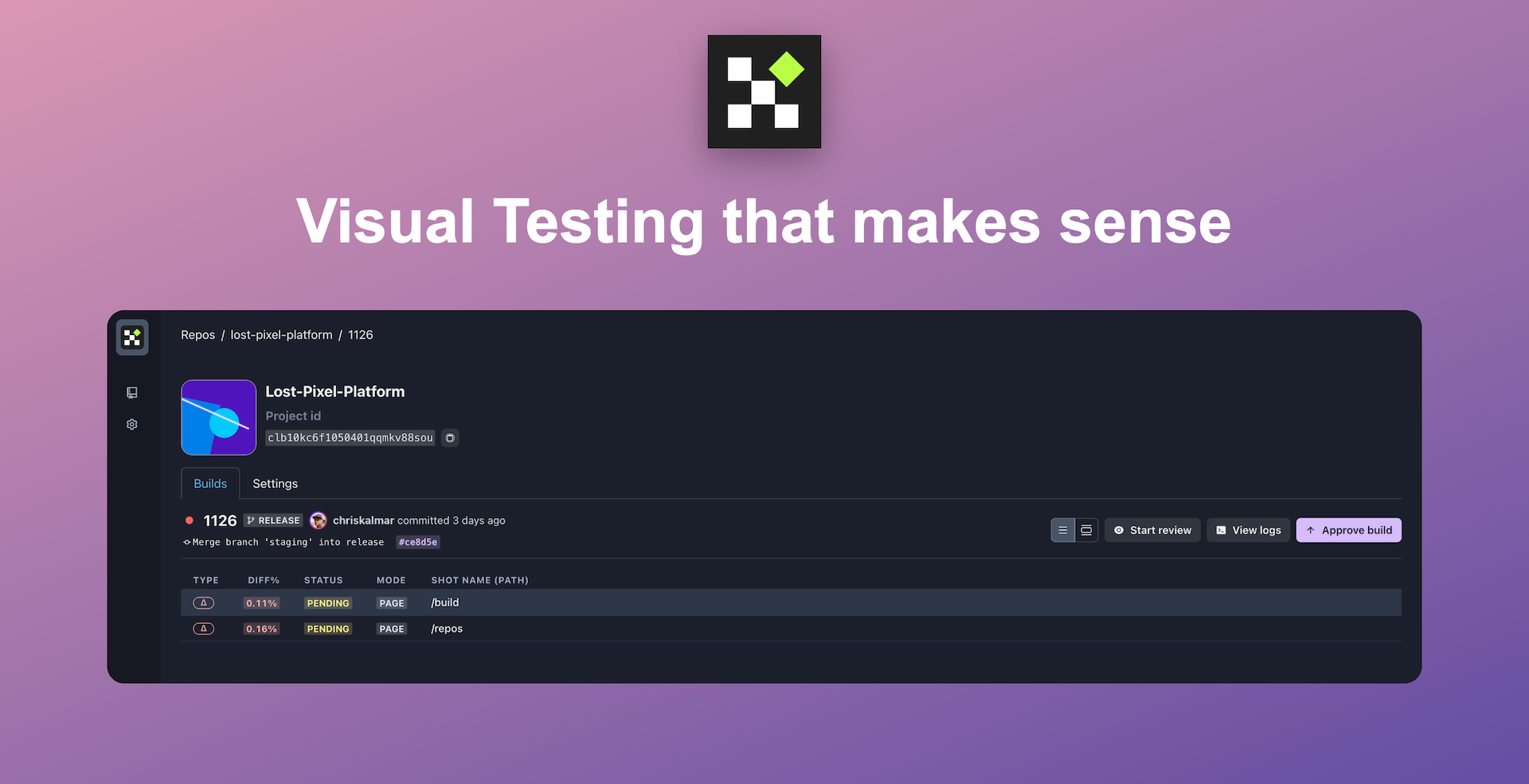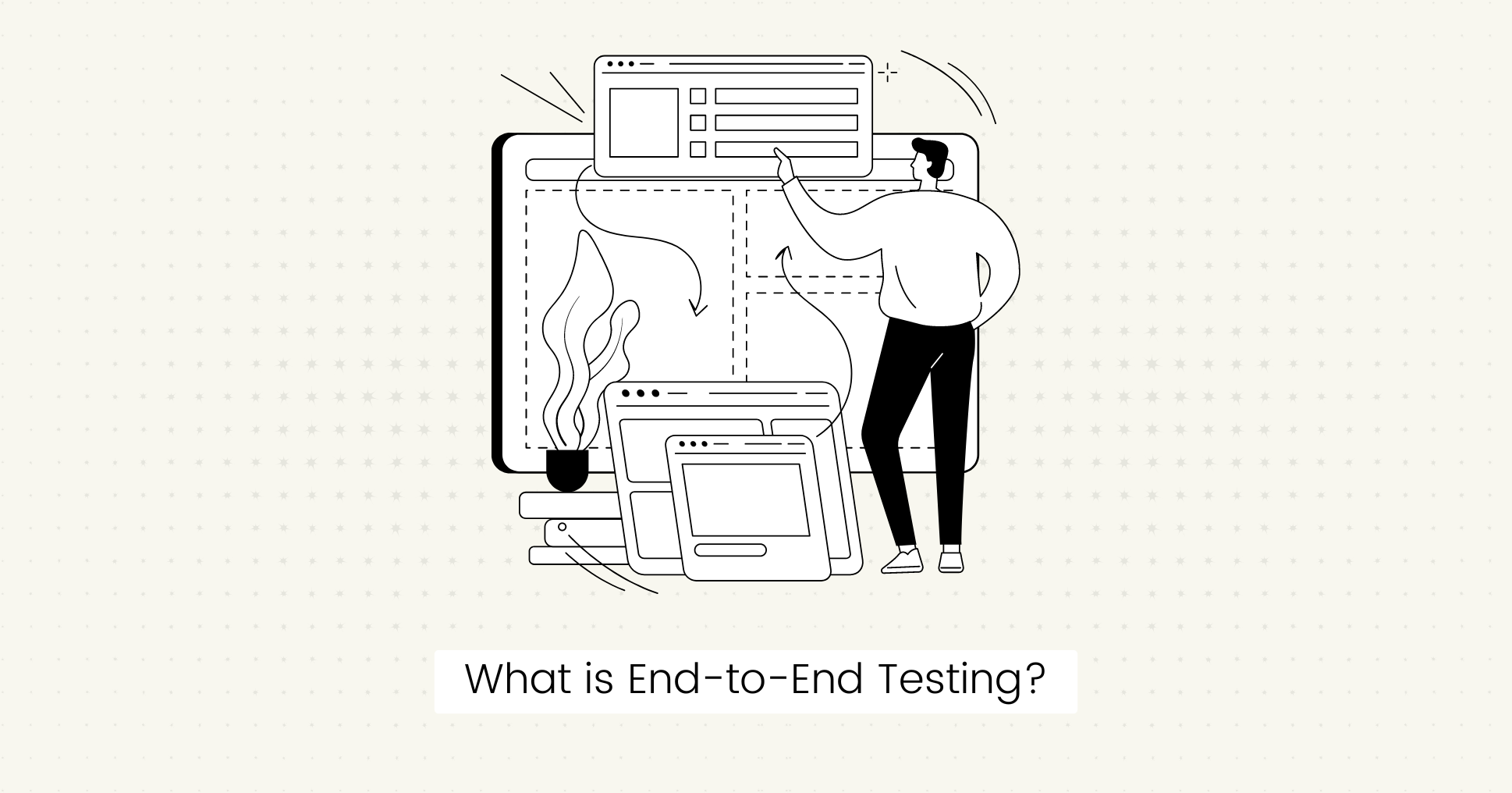You want to make sure your software works perfectly every time a new feature is added.
Imagine if your app suddenly stops doing something because you changed the code.
It's hard to trust your software when updates often introduce new bugs.
Two important types of software testing you can use to test your software for a better user experience are regression testing and end-to-end testing.
Regression testing double-checks that what worked earlier still functions correctly after changes are made to the code.
In end-to-end testing, the entire system is checked from start to finish.
Each type serves different purposes and has its own benefits.
This guide will help you understand these two testing strategies and how to use them for full testing coverage.
Let's get started.
These two testing methods are often confused with one another.
Regression testing can be performed at all levels of testing, from unit tests to end-to-end tests.
However, end-to-end testing does not consist solely of regression tests.
Let's look at the differences between regression and end-to-end testing to help you understand when to use each for successful implementation.
What is Regression Testing?

Regression testing is a way to make sure that when you make changes to your software, you don't break something that was functioning before.
It is like a safety check to see that changes in one place have not produced bugs elsewhere.
When you fix bugs or add new features, regression testing ensures that the existing parts still function correctly.
Regression testing involves:
- Creating test environments that mimic real-world scenarios.
- Writing and running test cases with test automation tools.
- Re-running test cases on affected areas to remove any regressions.
Examples:
- You added a new feature to an online shopping app that allows users to save their favorite items. You can perform regression testing to check that other features, like adding to the cart and checking out, still work as they should.
- After updating the layout and design of your mobile app, you can check that users can still see your blog posts and subscribe to the newsletter without any problems.
Pros:
This type of testing has many benefits:
- Quickly detects new bugs during development.
- It helps fix issues early to prevent costly damages.
- Maintains software quality and stability over time.
- Less expensive and time-consuming than end-to-end testing.
- Automated regression testing helps reduce the time and effort required for manual testing.
- You can integrate it into the CI/CD pipeline for continuous testing.
Cons:
Some challenges for regression tests are:
- Requires regular updates to the test suite to keep up with changing requirements.
- It may not cover all possible user scenarios.
- It can take time to create new tests and maintain test cases.
- Might miss some bugs that are not covered by the tests.

Set up visual regression tests in minutes with Lost Pixel Platform. Do not let your users find bugs first.
Types of Regression Testing
Regression testing has different types depending on how it is performed.
- Corrective: Conducted when no changes are made to the existing code.
- Retest-all: Involves re-running all tests to check the entire system's functionality.
- Selective: Focuses on specific parts of the code most likely affected by recent changes.
- Progressive: Tests that new features are compatible and function well with existing ones.
- Complete: Performed after multiple changes or when the overall application is updated.
- Unit regression testing: Tests individual components or small parts to ensure they still work properly.
- Visual regression testing: This method uses visual testing tools to check UI elements like fonts, images, icons, layout, etc., for unwanted changes.
When to Perform Regression Testing?
Regression testing is crucial for a software application to remain stable and reliable after updates.
It is especially important when an adjustment is made to the current code, which may cause unexpected behavior.
You need to perform regression tests in the following scenarios:
- After fixing a reported bug or adding a new feature.
- An existing feature is changed or upgraded.
- Changes are made to the user interface.
- When optimizing system performance.
- When there is an environment change.
- After releasing a new version of the software.
- Continuous testing to maintain software stability.
Who can perform regression testing?
Regression testing is typically done by:
- Quality Assurance (QA) testers
- Developers
- Business analysts
- Product owners
- Beta testers
Automation tools for Regression Testing
Many automated regression testing tools available in the market can help you speed up the testing process. Here are some popular tools you can check out:
- Selenium (web-based regression tests).
- Appium (mobile app testing).
- Playwright visual regression.
- Lost Pixel (visual regression testing).
What is End-to-End Testing?

End-to-end (E2E) testing is a way to check if a software application works as expected from start to finish.
It tests all the user flows and integrated components of the application to confirm that they interact without any problem.
It is like giving your software a thorough check-up to make sure that every part works perfectly together from the perspective of the end users.
Example:
Imagine a mobile banking app that allows users to log in, check their balance, transfer money, pay bills, and log out.
End-to-end tests will check all these actions step by step and see whether all integrations work together without any issues.
Pros:
End-to-end testing has benefits that make it an important part of your testing suite.
- Tests the complete workflow from the front-end interface to the back-end processes.
- Provides greater coverage for system-level issues.
- It helps improve user experience by simulating real user behavior.
- Increases confidence in the application performance before release.
Cons:
- End-to-end tests take longer to run than regression tests.
- Can be hard to set up and maintain test cases.
- Tests can be flaky and sensitive to minor changes.
- It might not be possible to cover all user scenarios.
- It is more expensive to perform than regression tests.
Types of End-to-end Testing
End-to-end testing can be classified into different types based on the scope and focus of the tests.
- Horizontal Testing: It involves testing across different applications or systems to verify that data flows smoothly between them.
- Vertical Testing: It tests that all layers and components in a single application, from top to bottom, work correctly, such as the user interface, API, database, etc.
- Integration Testing: It tests that all interactions between different systems, modules, or dependencies work properly.
- Scenario Testing: It simulates real-world scenarios to see how users interact with the system to identify any functional or usability issues.
- User Acceptance Testing (UAT): It validates that the software is ready for release and meets user requirements and expectations.
- API Testing: It tests the application programming interfaces (APIs) to check that requests and responses are handled correctly.

Set up visual regression tests in minutes with Lost Pixel Platform. Do not let your users find bugs first.
When to perform End-to-end Testing?
For efficient test coverage, you should conduct end-to-end testing for the smaller, more focused tests first and then move on to more complex test cases.
Here are a few scenarios when end-to-end testing is done:
- Before release, validate that the entire application works correctly.
- After updates, check that existing functionality is not broken.
- When there is a change in requirements or a new feature is added.
- Integration with third-party services.
Who can perform End-to-end testing?
- QA professionals
- Testers
- End users
- Product owners
- Project managers
- Developers
Automation Tools for End-to-end Testing
There are many automation tools available that perform end-to-end tests.
Some popular tools you can check out:
- Cypress (end-to-end testing for web apps).
- Postman (API testing).
- TestComplete
- Lost Pixel (end-to-end visual tests)

Set up visual regression tests in minutes with Lost Pixel Platform. Do not let your users find bugs first.
Final Words
End-to-end testing and regression testing are both important for improving software quality.
Both have their own purpose, benefits, and challenges for different test scenarios.
This guide will help you learn the differences between the two testing types to choose the right one for your project and test more confidently.
FAQs
How is end-to-end testing different from user acceptance testing?
Both end-to-end testing and user acceptance testing validate the system performance from the end user's perspective. While UAT verifies if the software meets user requirements and is ready for release, E2E testing checks that the entire system and its integrated components function correctly.
What is the difference between re-testing and regression testing?
Re-testing verifies that specific bugs have been fixed, while regression testing checks that new changes have not affected existing functionalities.

About Dima Ivashchuk
Hey, I'm - Dima the co-founder of Lost Pixel. I like modern frontends, building stuff on the internet, and educating others. I am committed to building the best open-source visual regression testing platform!
